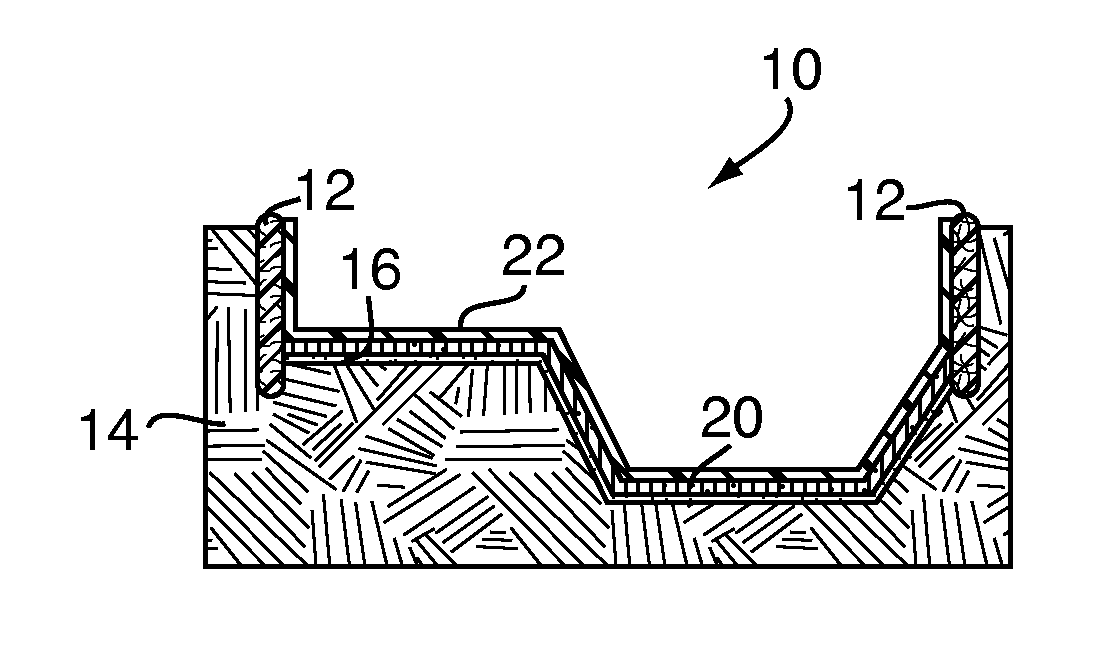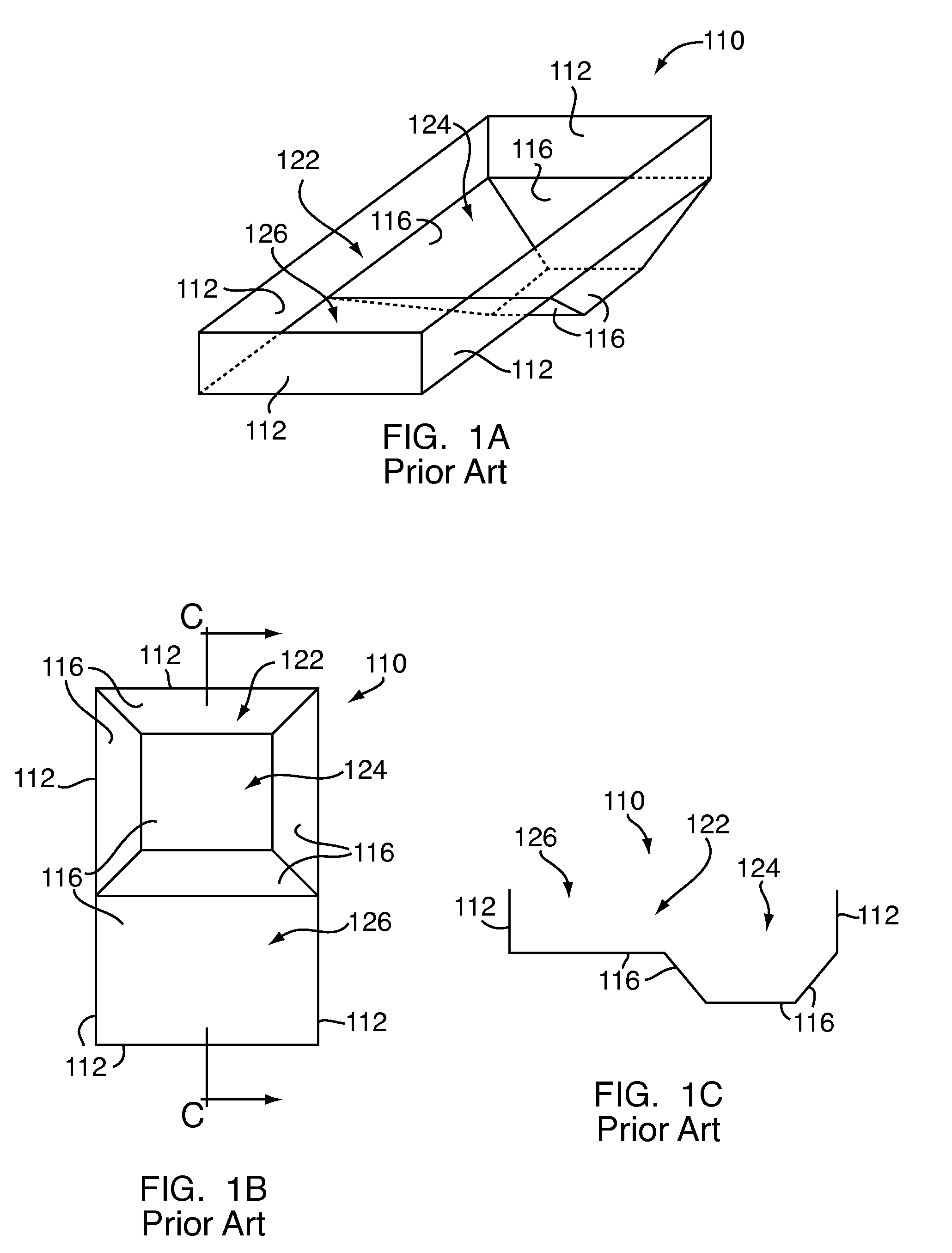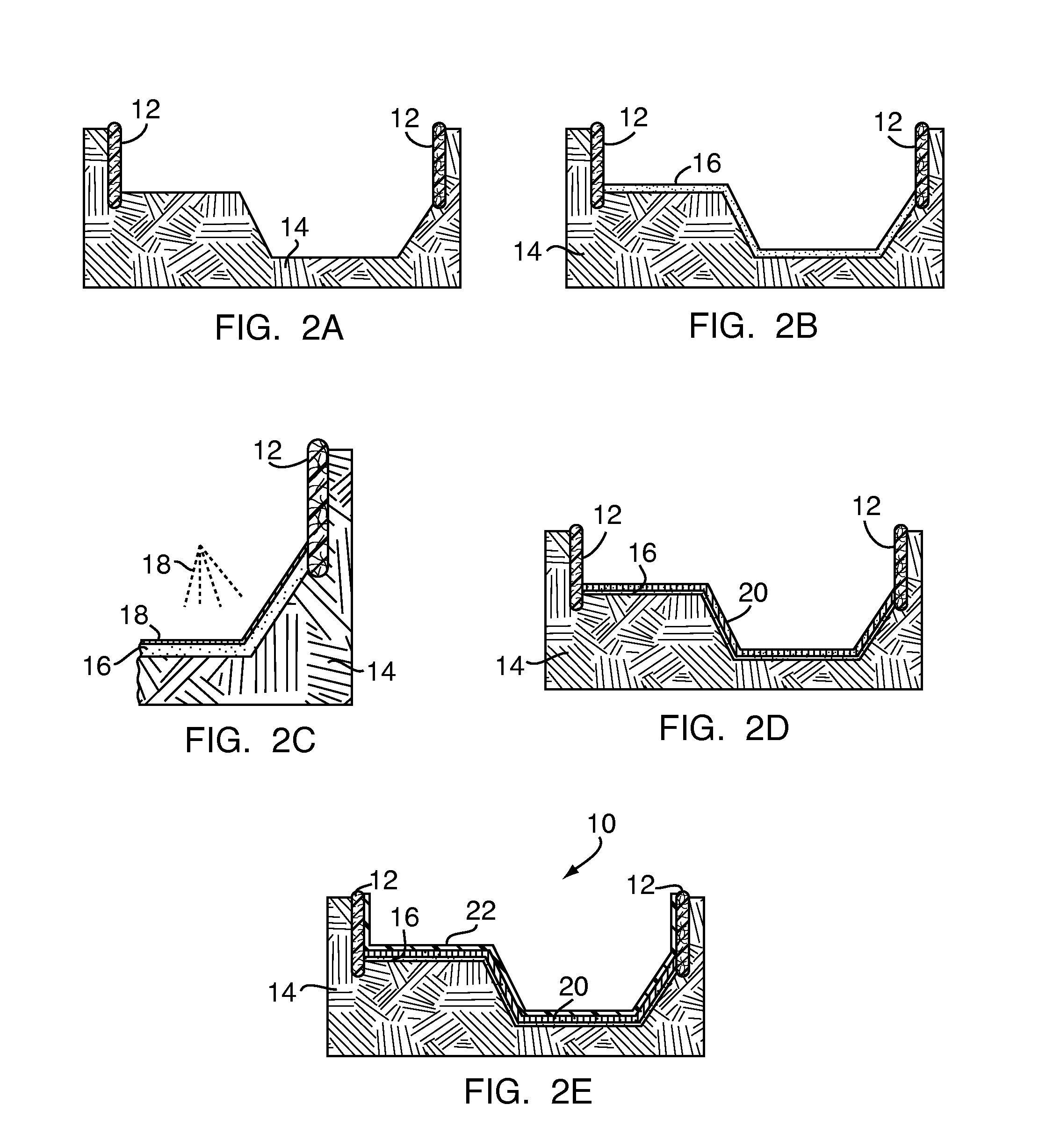Soil solidifier and related methods
a technology of soil solidifier and soil layer, applied in the field of soil solidifier, can solve the problems of soil being subject to the constant shifting and reactive nature of soil, affecting the installation speed of soil solidifier, so as to achieve the effect of more rapid and easy installation
- Summary
- Abstract
- Description
- Claims
- Application Information
AI Technical Summary
Benefits of technology
Problems solved by technology
Method used
Image
Examples
example 1
[0045]A first solidifier solution (Example 1) was prepared using the acrylic-styrene emulsion polymer solution Acronal® 2835, which is produced by BASF Corporation, of Charlotte, N.C., as the monomer. Zinc Oxide #1 solution, which was produced by Johnson Polymer, of Sturtevant, Wis., was used as a cross-linking agent. Additionally, Surfynol® DF-66, which is produced by Air Products and Chemicals, Inc., of Allentown, Pa., was used as a surfactant.
[0046]Acronal® 2835 is an acrylic polymer latex with approximately 50% solids by weight, a viscosity of approximately 300 cps, a density of approximately 8.7 pounds per gallon, and a glass transition temperature of 20° C. Acronal® 2835 is a basic solution with a milky white liquid and an acrylic odor. Acronal® 2835 has a specific gravity of 1.1, a pH of approximately 9.0, and 47.5% volatile organic compounds by weight.
[0047]Zinc Oxide #1 comprises carbonic acid and salts of ammonium and zinc, such as zinc ammonium carbonate, in solution. Zin...
example 2
[0050]A second solidifier solution (Example 2) was prepared using the acrylic-styrene emulsion copolymer marketed under the name Texicryl® 13-061, which is produced by Scott Bader, Inc., Stow, Ohio, as the monomer. Zinc Oxide #1 was used as the cross-linking agent, and Surfynol® DF-66 was used as the surfactant.
[0051]Texicryl® 13-061 is a 50% styrene acrylic copolymer latex, modified to include silane incorporated into the polymer backbone, in order to improve its flexibility and water resistance. Texicryl® 13-061 has approximately 50% solids by weight, and a specific gravity of 1.02, a viscosity of 50-200 cps, a pH of 7.0 to 8.5, a glass transition temperature of 11° C. Texicryl® 13-061 also has a minimum film forming temperature of 0° C.
[0052]The Example 2 solution was formed using 80% Texicryl® 13-061, 2% Zinc Oxide #1 solution and 18% water by volume, plus approximately three drops of Surfynol® DF-66 as a surfactant. The Example 2 solution was formed by mixing the ingredients, a...
PUM
| Property | Measurement | Unit |
|---|---|---|
| diameter | aaaaa | aaaaa |
| diameter | aaaaa | aaaaa |
| diameter | aaaaa | aaaaa |
Abstract
Description
Claims
Application Information
 Login to View More
Login to View More - R&D
- Intellectual Property
- Life Sciences
- Materials
- Tech Scout
- Unparalleled Data Quality
- Higher Quality Content
- 60% Fewer Hallucinations
Browse by: Latest US Patents, China's latest patents, Technical Efficacy Thesaurus, Application Domain, Technology Topic, Popular Technical Reports.
© 2025 PatSnap. All rights reserved.Legal|Privacy policy|Modern Slavery Act Transparency Statement|Sitemap|About US| Contact US: help@patsnap.com



